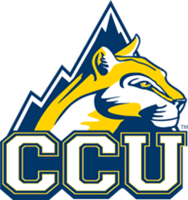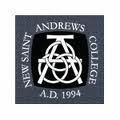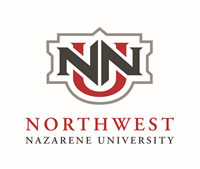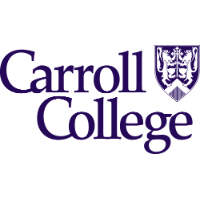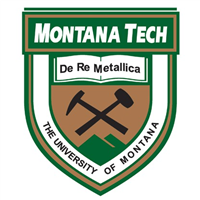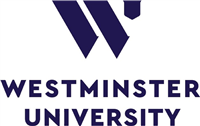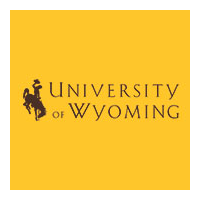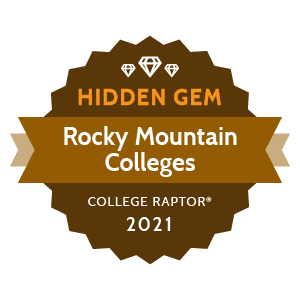 The Rocky Mountain Range spans over 3,000 miles from New Mexico to northern British Columbia in Canada. There are a lot of Rocky Mountain colleges in that area that are as mighty as the mountains themselves.
The Rocky Mountain Range spans over 3,000 miles from New Mexico to northern British Columbia in Canada. There are a lot of Rocky Mountain colleges in that area that are as mighty as the mountains themselves.
States included in the Rocky Mountain region are as follows: Colorado, Idaho, Montana, Utah, and Wyoming.
To qualify as a Hidden Gem, a school must meet the following requirements:
- Receive fewer than 5,000 applications
- Have fewer than 7,000 undergraduate students
- Have an acceptance rate higher than 10%
Here you’ll find the top 3 Hidden Gems per state. If there are fewer than 3, it means no other schools matched our criteria this year.
Interested in Rocky Mountain colleges? Check out the rankings below.
COLORADO
Psychology, Business Administration, Registered Nursing, and Organizational Behavior Studies are some of the most popular majors on campus. 32% of the incoming students come from Colorado, but many come from all over the country. 99% of the students at CCU receive financial aid from the university to help cover costs.
Location
Lakewood, CO
Institution Type
Private
Student Enrollment
7,625
Every year, the university receives over 2,500 applications -- incoming students, on average, had an ACT score between 20 to 25 and an SAT score between 1,010 to 1,220. Students at Western Colorado University have over 20 majors to choose from. Student athletes are known as the Mountaineers and the school’s official colors are crimson and slate.
Location
Gunnison, CO
Institution Type
Public
Student Enrollment
3,034
Johnson & Wales University -- Denver opened its doors in 2000, with over 1,000 students currently attending. The university receives over 2,700 applications every year -- of the students who end up enrolling, 38% of them live in Colorado. Popular majors at JWU Denver include Foodservice Systems Management, Culinary Arts, and Business Administration.
Location
Denver, CO
Institution Type
Private
Student Enrollment
1,008
IDAHO
New Saint Andrews College doesn’t offer majors, but instead one Liberal Arts program to its students. The school has a 13:1 student-to-faculty ratio and a first-year retention rate of 86%. 28% of the incoming class comes from the state of Idaho. New Saint Andrews College has a rather high acceptance rate, 98%.
Location
Moscow, ID
Institution Type
Private
Student Enrollment
198
Nicknamed the Coyotes -- or the Yotes -- the student-athletes of the College of Idaho play a variety of sports, including basketball, soccer, swimming, and track. C of I, as it’s often referred to, has a student-to-faculty ratio of 10:1. Just over half of all incoming students call Idaho home. Similarly, the college’s acceptance rate is just under half -- at 49%.
Location
Caldwell, ID
Institution Type
Private
Student Enrollment
964
Northwest Nazarene University does not require students to pay an application fee. The school also has a relatively high acceptance rate, at 86%. There is a 16:1 student-to-faculty ratio on campus. 47% of incoming students come from Idaho, but many others come from the neighboring state of Washington and Oregon.
Location
Nampa, ID
Institution Type
Private
Student Enrollment
2,201
MONTANA
“Non Scholae Sed Vitae” or “Not For School, But For Life” is the motto of Carroll College. Halo the Saint Bernard is the official mascot of this baccalaureate school. Located in the state capital, Carroll College has an acceptance rate of 69%. Registered Nursing, Health Services, Biology, Business, and Elementary Education are the most popular majors.
Location
Helena, MT
Institution Type
Private
Student Enrollment
1,327
Originally called the Montana School of Mines, the modern college still pays homage to its roots with the motto “De re metallica” or “Of the metals.” Likewise, the sports teams are known as the Orediggers. Green and copper are the official colors. Engineering, Petroleum Engineering, and Mechanical Engineering are the most popular majors.
Location
Butte, MT
Institution Type
Public
Student Enrollment
1,844
The University of Montana -- Western was founded in 1893 for students interested in teaching. Over time, the school began to offer more subjects. Of the 1,500 students who currently attend the university, 73% of them receive some form of grant aid and 63% receive some form of institutional aid. The majority of first-year students are from Montana.
Location
Dillon, MT
Institution Type
Public
Student Enrollment
1,508
UTAH
Purple and gold are the school colors of Westminster College. Competing in NCAA Division II sports as the Griffins, Westminster student athletes enjoy soccer, skiing, lacrosse, and basketball among other sports. Alumni of Westminster have gone on to become professional athletes, politicians, musicians, and scientists.
Location
Salt Lake City, UT
Institution Type
Private
Student Enrollment
2,477
One of the youngest colleges in America, having been founded in 2003, Neumont is a career-focused institution of higher learning in Utah’s state capital. Neumont offers 5 total majors -- Computer Programming, Network and System Administration, Information Technology Project Management, Web Page Design, and Modeling Virtual Environments and Simulation.
Location
Salt Lake City, UT
Institution Type
Private
Student Enrollment
430
*WYOMING
Known also as simply UW, the school is a large research college. There are two mascots -- Pistol Pete and Cowboy Joe, who is portrayed by a real horse. Brown and gold are the colors worn by over 400 student-athletes when they compete. Wrestling, football, swimming, track, and golf are popular sports.
Location
Laramie, WY
Institution Type
Public
Student Enrollment
12,450
*Note: While Wyoming did not have any colleges that qualified under our Hidden Gems criteria this year, we included the closest match. In the spirit of Hidden Gems, we feel it’s important to include schools from all states so students and families know about the opportunities around them.
Interested in any of these Rocky Mountain colleges? Check out College Raptor’s free match tool to see if they’re a good fit for you!
Methodology
Colleges are ranked based on a combination of factors, including graduation rates, campus diversity, endowment per student, and other data as reported via the National Center for Education Statistics (NCES) for the most recently-available enrollment year. Some colleges may have been excluded from rankings based on certain criteria, including specialization and classification. Learn about our full methodology.
 The Rocky Mountain Range spans over 3,000 miles from New Mexico to northern British Columbia in Canada. There are a lot of Rocky Mountain colleges in that area that are as mighty as the mountains themselves.
The Rocky Mountain Range spans over 3,000 miles from New Mexico to northern British Columbia in Canada. There are a lot of Rocky Mountain colleges in that area that are as mighty as the mountains themselves.